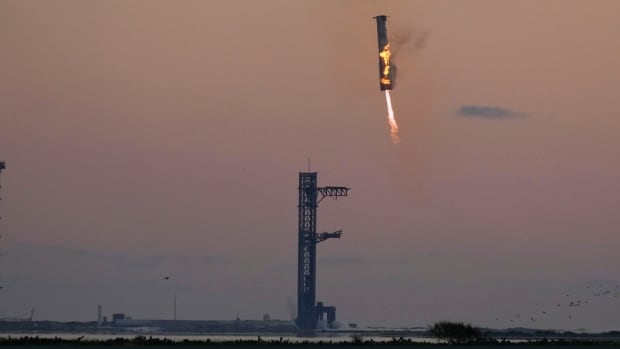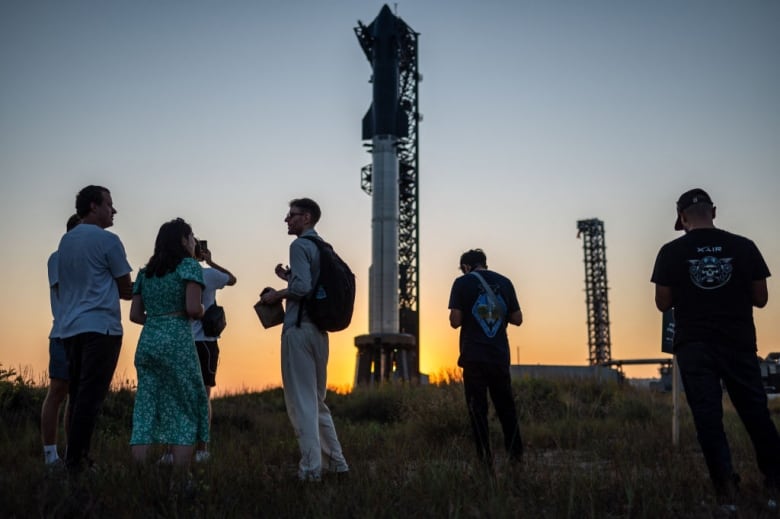
SpaceX on Sunday launched its fifth Starship test flight from Texas and returned the rocket’s towering first-stage booster back to land for the first time, achieving a novel recovery method involving large metal arms.
The rocket’s Super Heavy first-stage booster lifted off at 8:25 a.m. ET from SpaceX’s Boca Chica, Texas, launch facilities, sending the second-stage Starship rocket on a path in space bound for the Indian Ocean west of Australia, where it will attempt atmospheric re-entry followed by a water landing.
The Super Heavy booster, after separating from the Starship booster some 74 kilometres in altitude, returned to the same area from which it was launched to make its landing attempt, aided by two robotic arms, dubbed chopsticks, attached to the launch tower.
SpaceX had said that both the 71-metre booster and launch tower had to be in good, stable condition. Otherwise, it was going to end up in the gulf like the previous ones.
Mechazilla has caught the Super Heavy booster! <a href=”https://t.co/6R5YatSVJX”>pic.twitter.com/6R5YatSVJX</a>
—@SpaceX
Once free of the booster, the retro-looking stainless steel spacecraft on top was going to continue around the world, targeting a controlled splashdown.
The June flight came up short at the end after pieces came off. SpaceX upgraded the software and reworked the heat shield, improving the thermal tiles.

SpaceX has been recovering the first-stage boosters of its smaller Falcon 9 rockets for nine years, after delivering satellites and crews to orbit from Florida or California. But they land on floating ocean platforms or on concrete slabs several kilometres from their launch pads — not on them.
Recycling Falcon boosters has sped up SpaceX’s launch rate and saved the company millions. CEO Elon Musk has said he intends to do the same for Starship, the biggest and most powerful rocket ever built with 33 methane-fuel engines on the booster alone.
NASA has ordered two Starships to land astronauts on the moon later this decade. SpaceX intends to use Starship to send people and supplies to the moon, and eventually Mars.